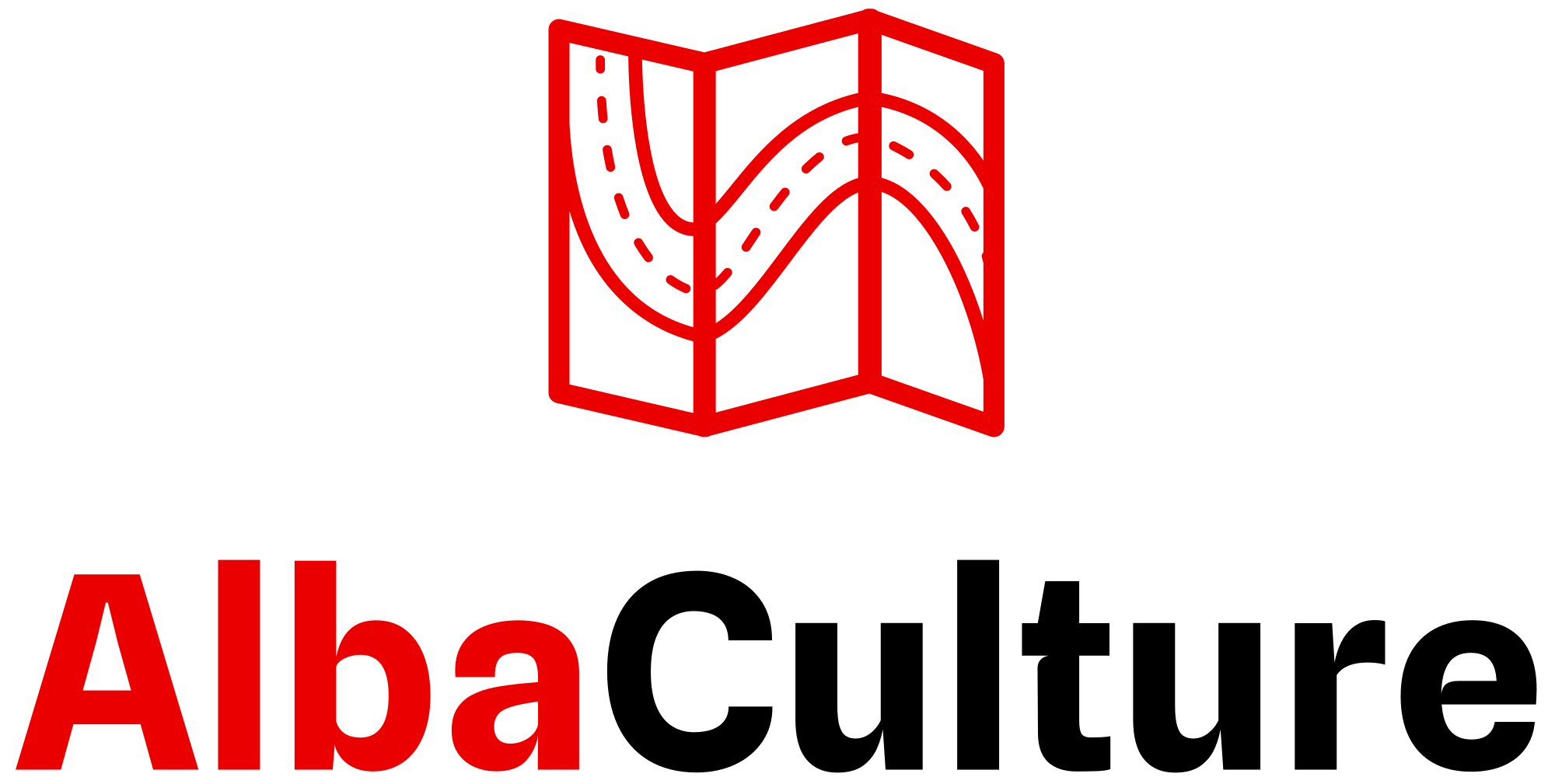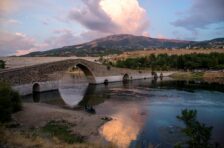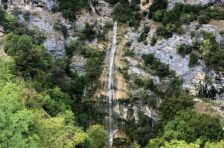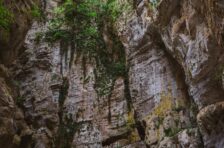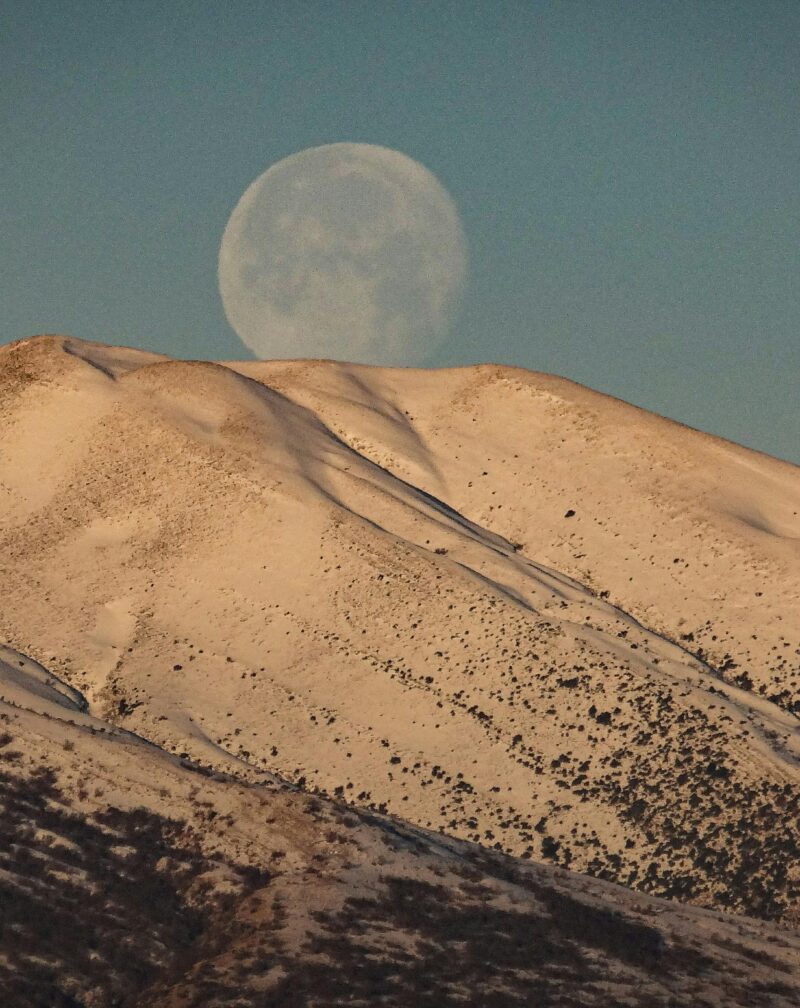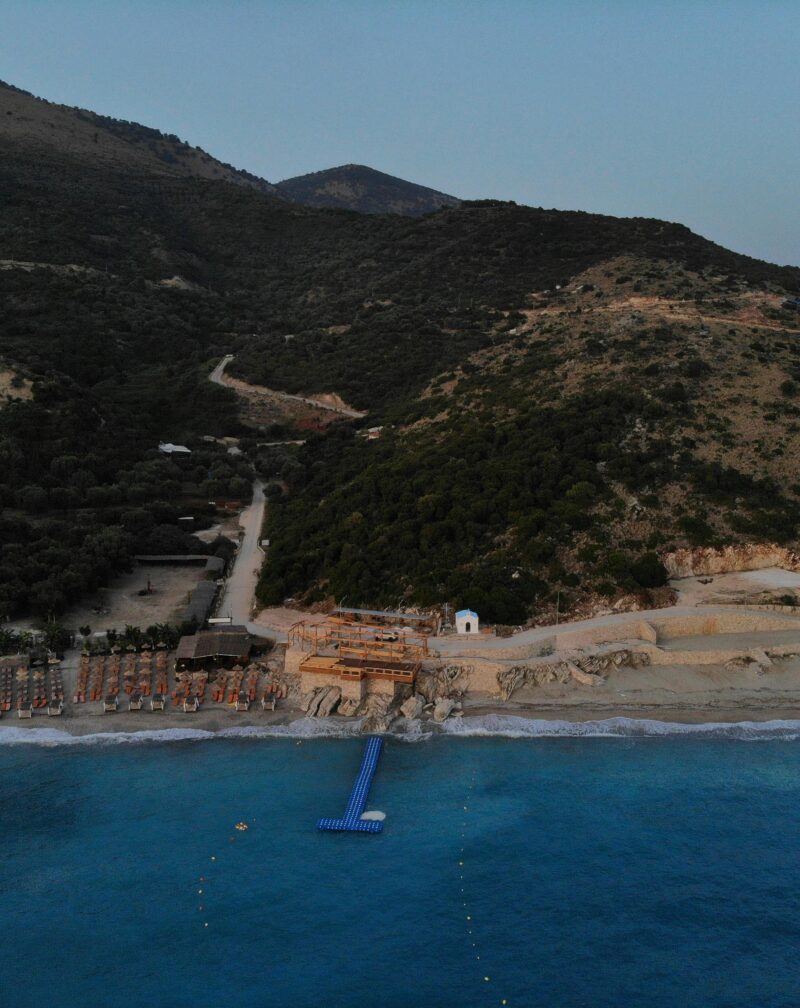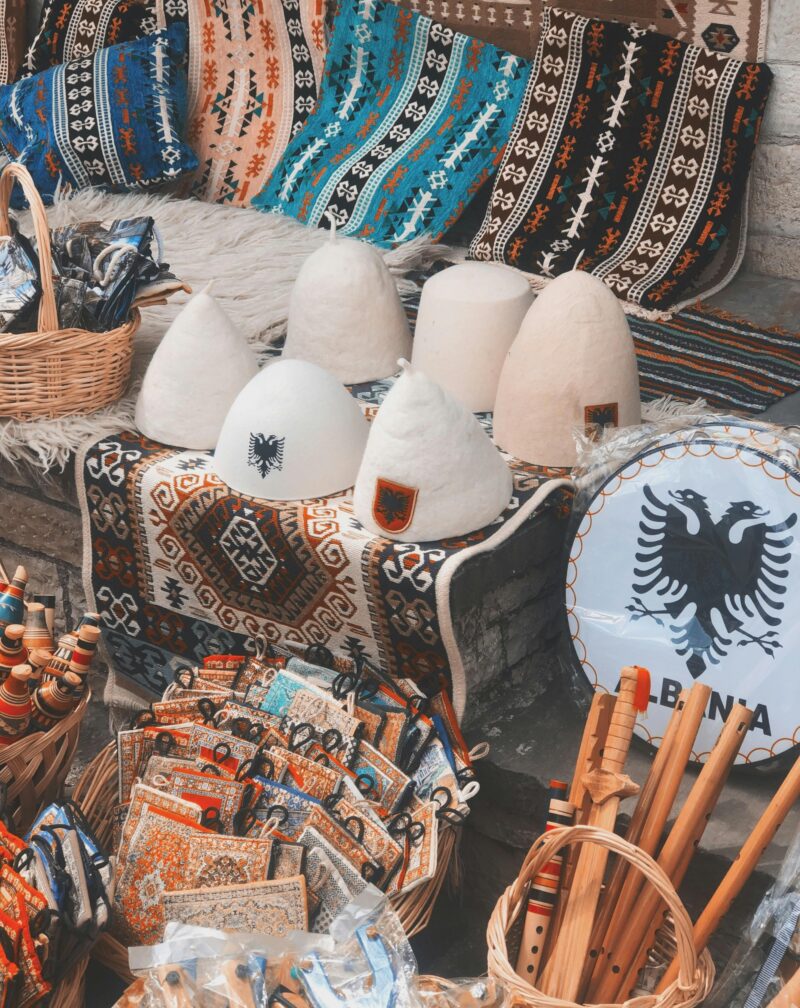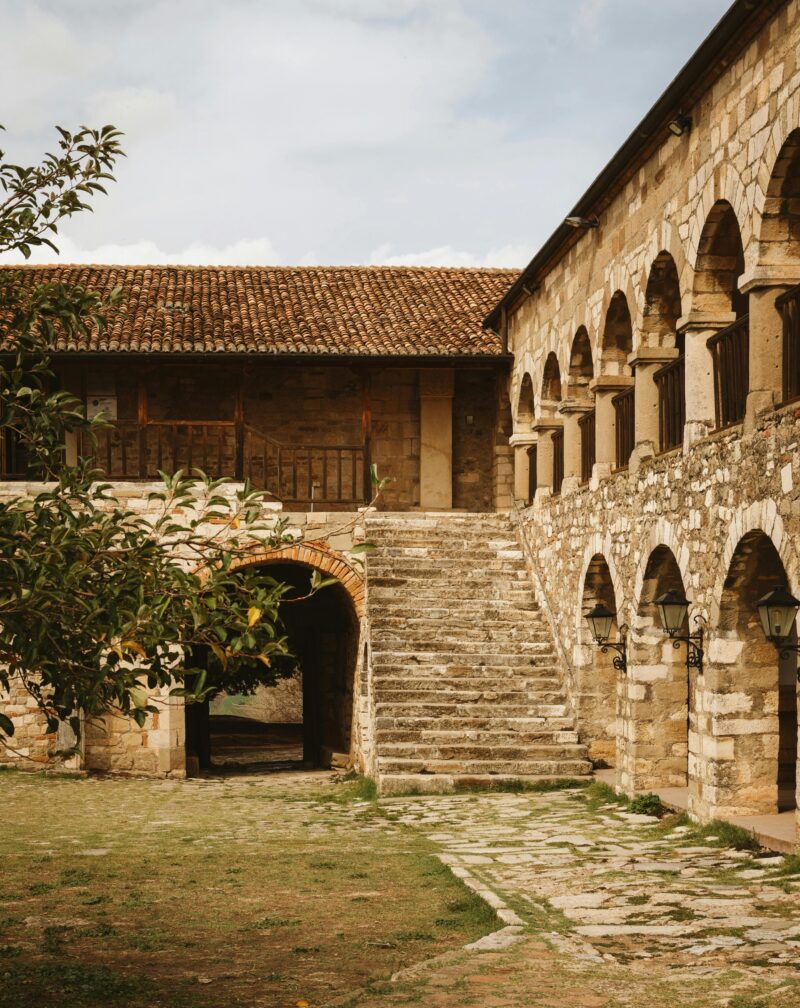What Each Season Brings
Albania transforms through the year. What you experience in April differs dramatically from August or November. Understanding seasonal highlights helps plan the right trip for your interests.
Spring: March, April, May
March – The Beginning March is transitional. Winter loosens its grip but hasn’t fully released. The coast starts warming. Mountains remain cold, sometimes snowy.
Early wildflowers appear in lowlands. Fruit trees blossom—almonds, cherries, apples creating white and pink displays across countryside. This happens mid-to-late March typically.
Easter often falls in March or April (Orthodox Easter follows a different calendar than Catholic). Towns with significant Orthodox populations celebrate with special foods, church services, and family gatherings. Gjirokastër and Korçë are particularly festive.
Tourism remains low. Hotels offer off-season rates. Archaeological sites are empty. You might be the only visitor to small museums.
Rain is common. Bring appropriate gear. But when the sun breaks through, the light is beautiful—clear, soft, perfect for photography.
April – The Sweet Spot April might be Albania’s best month if you don’t need beach weather. Temperatures reach 15-22°C typically. The countryside explodes with wildflowers. Hills turn green after winter.
This is perfect touring weather. You can walk around Berat Castle comfortably. Butrint’s ruins feel magical surrounded by spring blooms. Mountain villages become accessible as snow melts.
Farmers plant crops. Markets fill with spring vegetables—artichokes, fava beans, wild greens. Traditional dishes feature seasonal ingredients.
Birds migrate through. Lake Shkodra and Lake Prespa attract species heading north. Birdwatchers love April and May.
Tourism is still light but increasing. Accommodation is available without advance booking in most places. Prices remain reasonable.
Weather can be unpredictable. Warm sunny days alternate with rain. Pack layers.
May – Nearly Summer By May, Albania feels like summer approaching. Temperatures climb to 20-28°C. Beach season begins, though water remains cool for swimming.
Mountains are accessible and beautiful. Theth and northern regions lose snow, opening hiking routes. Wildflowers peak in mountain meadows.
Roses bloom, including in Albania’s limited rose-growing regions. Some villages maintain small rose festivals, though these are local affairs, not tourist events.
This is ideal for food tourism. Spring lamb is traditional. Fresh vegetables are abundant. Markets overflow.
Tourism increases noticeably. Popular destinations like Berat and Gjirokastër see more visitors but nothing overwhelming. Coastal areas start operating fully—restaurants and hotels that closed for winter reopen.
Days are long. Sunset comes late, giving plenty of daylight for activities.
Summer: June, July, August
June – Perfect Timing June balances summer warmth with manageable crowds. Temperatures hit 25-32°C. Sea warms enough for comfortable swimming.
The Riviera shines in June. Water clarity is excellent. Beaches aren’t yet packed. Coastal towns operate at full capacity but without August madness.
Interior cities like Berat and Gjirokastër get hot midday. Plan morning and late afternoon activities, rest during peak heat.
National Folklore Festival happens in Gjirokastër every five years (next in 2025). When it occurs, the city fills with performers in traditional costume, music, dancing. It’s spectacular but creates crowding and accommodation shortages.
Early June is graduation season. Albanian families celebrate, making some restaurants and hotels busy with local events.
July and August – Peak Season These months bring heat and crowds. Temperatures regularly exceed 30°C, sometimes hitting 35-40°C in interior valleys.
The coast becomes Albania’s center of gravity. Ksamil, Dhërmi, Himara, Saranda fill with Albanian families, diaspora visiting from abroad, and increasing numbers of international tourists.
Beach clubs operate. Music plays. The atmosphere is social and energetic. If you want lively beach scene, this is your window.
Inland attractions suffer in the heat. Climbing castles or walking archaeological sites in the afternoon sun is brutal. Early morning or evening touring works better.
Mountains offer escape from heat. Northern Albania stays relatively cool. Theth, Lake Koman, and mountain villages provide relief.
Prices peak. Hotels in tourist areas charge maximum rates. Advance booking is essential for popular destinations.
Albanian diaspora returns for vacation, particularly August. This creates interesting cultural dynamic—returnees showing off success, speaking Albanian with foreign accents, bringing different perspectives.
Water activities are perfect. Swimming, kayaking, boat trips—ideal conditions throughout summer.
Autumn: September, October, November
September – The Second Spring September rivals May as Albania’s best month. Temperatures drop to comfortable 22-28°C. Sea reaches its warmest after months of summer sun.
Crowds disappear almost overnight after mid-September when European school holidays end. Prices drop. Tourist areas remain open but uncrowded.
Swimming is excellent. Water temperature peaks. Beaches empty. You can have beautiful coves largely to yourself.
This is harvest season. Grapes are picked for wine. Olives begin harvesting. Figs ripen. Markets showcase autumn produce.
Light in September is gorgeous—warm, golden, perfect for photography. Ruins look spectacular. Coastal views shimmer.
The weather is generally stable. Rain increases toward month’s end but September stays mostly dry.
October – Harvest and Color October brings serious harvest activity. Olive picking is in full swing. Wine production happens. If you’re interested in agricultural tourism, this is prime time.
Temperatures cool to 18-24°C typically. Still pleasant for touring. Mornings and evenings get crisp.
Autumn colors appear in mountain regions. Forests around Voskopojë, Theth, and other highland areas turn yellow and red. Less dramatic than New England but beautiful.
Tourism continues to drop. Many coastal hotels close. Inland sites remain accessible. Cities maintain normal operations.
Rain increases. Bring a waterproof jacket. But rain isn’t constant—plenty of clear days occur.
Food festivals happen in various regions celebrating specific products. These are local events, not heavily promoted to tourists, but welcoming if you stumble upon them.
November – Transition November shifts toward winter. Temperatures drop to 10-18°C. Rain becomes frequent.
Most coastal tourism infrastructure closes. Saranda stays partially operational but Ksamil, Himara, and smaller beach towns essentially shut down.
This is an authentic travel season. You see Albanian life without tourist overlay. Cities function normally. People go about daily routines indifferent to whether visitors are present.
Archaeological sites stay open. Museums operate. You can visit major attractions with zero crowds and off-season prices.
Mountain areas become difficult or impossible to access as snow falls. Roads to Theth close. Highland regions are for serious adventurers only.
November has its own beauty—dramatic skies, moody light, green hills after rain. But it’s not a typical tourist season for obvious reasons.
Winter: December, January, February
December – Holiday Atmosphere Despite communist atheist history, Christmas decorations appear in cities. New Year is celebrated more enthusiastically than religious Christmas for many Albanians, but both create festive atmosphere.
Tirana puts up lights and decorations. Markets sell seasonal items. The city feels celebratory despite cold weather.
Temperatures range 5-12°C typically in lowlands. Mountains are cold with regular snow. The coast stays milder.
This is local-only season. Almost no tourists. Hotels offer deep discounts if they remain open. You’ll have attractions entirely to yourself.
Rain is common. Days are short. But if you want to experience Albanian life completely separate from tourism, winter delivers.
January and February – The Quiet Months These are Albania’s coldest, wettest months. Temperatures hover 3-10°C in lowlands, well below freezing in mountains.
Snow falls in northern and mountain regions. Skiing is possible in limited areas, though infrastructure is basic compared to established ski destinations.
Coastal cities stay operational but quiet. Durrës, Vlora, Saranda maintain some tourism services, though options are limited.
This is when locals travel domestically least. Life focuses on work, home, family. Public spaces are less active.
For certain travelers, winter offers something unique—complete authenticity.You see Albania as Albanians experience it.
Archaeological sites and museums remain open. You can explore Butrint in rain with no one else around. Whether that sounds appealing or miserable depends on your perspective.
Special Events Across the Year
Summer Day (Dita e Verës) – March 14 Traditional spring celebration. Families make sweets, exchange small gifts, spend time outdoors. It’s ancient pagan festival that survived in Albanian culture.
Nevruz – March 22 Celebrated in Bektashi communities, marking spring equinox. Korçë has significant celebrations as it has a large Bektashi population.
Independence Day – November 28 National holiday commemorating 1912 independence from Ottoman Empire. Flags everywhere. Military parades. Celebrations in major cities.
Liberation Day – November 29 Follows Independence Day, marking liberation from German occupation in 1944. Often celebrated together as extended national holiday.
When to Go Depends on You
For beaches: June through September, with July-August being warmest but most crowded.
For culture and touring: April-May and September-October offer the best balance of weather, light crowds, and accessibility.
For authenticity and solitude: November through March, accepting weather limitations.
For festivals and social energy: Summer, particularly July-August.
For nature and hiking: May-June and September for best conditions. July-August if you stick to higher elevations.
For photography: April-May for wildflowers and green landscapes. September for harvest scenes and golden light. Winter for dramatic moody shots.
For value: Outside July-August, prices drop significantly. Off-season travel costs much less.
There’s no universally “best” time. It depends on what you want. Albania offers different experiences each season, all valid depending on your priorities.



